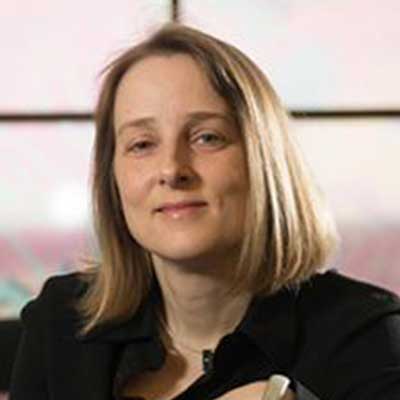Exascale Day Audio: Katrin Heitmann
Impact Area: Cosmological Science

Katrin Heitmann, Argonne National Laboratory
Transcript
I’m Katrin Heitmann of Argonne National Laboratory, and I’m part of the High Energy Physics division at Argonne. My area of research is computational cosmology, and as part of my research I’m funded by the Exascale Computing Project to work on the ExaSky project.
ExaSky—basically, the title tells you all—what we are trying to do is to simulate the evolution and makeup of the universe from its very beginnings to what we see with the largest telescopes available in the world. I’m extremely excited about the arrival of Frontier and Aurora to enable simulations as we have never been able to carry out before. The details of the universe that we’ll be able to capture with these simulations will be unprecedented. At the same time, the arrival of these supercomputing resources coincides with the Vera Rubin Observatory, which is a telescope that’s currently being built in Chile and will switch on at roughly the same time as Aurora and Frontier.
So, we will have the opportunity not to only simulate the universe at unprecedented detail but also to compare it to observations and really try to make progress in our understanding of the universe. In particular, we are asking the question, why has the expansion of the universe accelerated? And Aurora and Frontier will really give us the opportunity to make progress on the theoretical side, and the Vera Rubin Observatory from the observational side. So, combining these outstanding resources together and really driving forward science—and, in particular, cosmological science—will be a very, very exciting opportunity, and I am very much looking forward to this. And all of this, really, is possible because we are putting together the Exascale Computing Project and ExaSky and enabling these extreme-scale simulations on these very unique resources.

